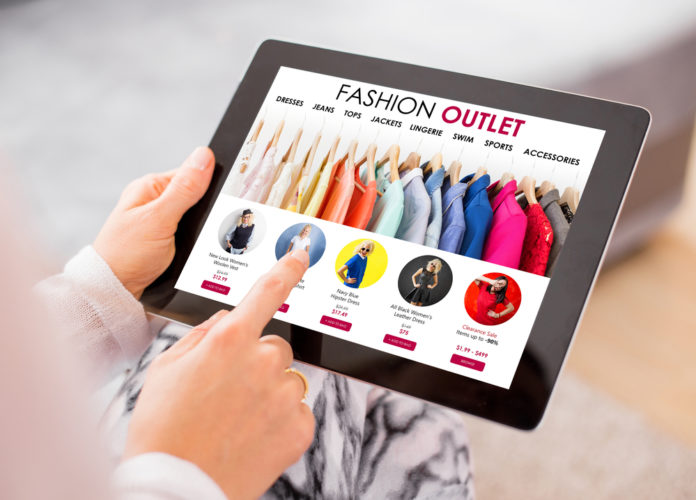The luxury sector has been in crisis mode since the pandemic, as locked down consumers turned away from big ticket purchases that wouldn’t be used or seen. The sector has suffered an immense 60 per cent decline.
As the world reopens in 2021, the ‘new normal’ will include shoppers whose habits have drastically changed. Luxury brands must keep up if they are to regain buyer trust. However, when it comes to online, it seems most are lagging behind mid-level leaders such as ASOS and Missguided in the UK, and Old Navy in the States, whose progressive moves and slick user experience are leading them to monopolise the online market.
It’s not that these online shoppers are afraid of spending money. In fact, Gucci reported that a huge 50 per cent of their sales are now coming from millennials – digital natives who are more likely to make their first luxury purchase online.
In an age where consumers are ready to spend more online than ever, a slow, lagging website or complex returns service just won’t cut it. Luxury brands must get creative with reproducing that sense of difference, end-to-end.
Here are five ways to remain memorable to attract consumers in an increasingly competitive virtual world.
-
Recreate the luxury shopping experience
Those that shop luxury expect that special, in-store experience; products are displayed intentionally with music and lighting – more like an art gallery than a store – and customers may be offered a drink by attentive, knowledgeable staff.
Luxury consumers don’t just buy the product, but the whole event – one that reassures them why they’re paying a premium. Yet nearly half of all consumers say their online experience of luxury brands falls short of what they’re used to in-store.
One way premium brands can translate the in-store ‘difference’ is to take full advantage of experiential technology. Adoption of VR can work wonders for a sense of occasion – like for Dior, whose customers can browse their entire Champs-Élysées store in 3D. In a similar vein, Burberry saw a 50% increase in sales when they invested in product animation and a real time chat function, proving that seeing the items up close and having instant service is important to them.
-
Build excitement with an exclusive, cultural moment
For retailers to see big improvements in the relationship between online merchant and buyer, they must work with the concept of ‘brand as destination’. The potential for live-streamed events really hit a peak through the pandemic. Live music, stand-up (or sit-down?) comedy and interviews with big industry names can be a rousing way to build hype around a brand.
To have the biggest impact, though, any hosted event should feel one-off and exclusive, and have massive potential for shareability on social media.
Online game Fortnite demonstrated this fantastically in 2020, when they collaborated with Travis Scott to host a virtual concert which attracted over 12 million attendees.
Burberry also gained a lot of clout when they live-streamed a catwalk show unveiling their spring/summer collection. For fashion fans, it was a moment of difference not to be missed.
-
Uplevel your operations, end-to-end
The pandemic has meant customers expect the highest level of service after they’ve clicked ‘buy’ – and with a luxury brand, those expectations are even higher. Tightening the process, from arrival on-site to fulfillment, is now essential to satisfying buyer needs and delivering consistent levels of service, regardless of spikes in demand. Luxury brands cannot falter in this area; the experience pre-and-post purchase that a customer receives must always be premium, otherwise brand’s will be sure to lose the second sale opportunity.
For luxury retailers to be meeting these demands and seeing similar sticking power, they can start by automating their operations from beginning to end. Introducing a fully-streamlined system can ensure your inventory, warehouse, delivery and fulfillment processes are synced and reliable; leaving you prepared for everything from a sudden surge in sales to quick replenishment and speedy, tracked deliveries.
-
Champion the local shopping movement
Another movement that saw a boost through the Covid months was a renewed love for shopping locally. Almost two thirds of shoppers said they’d shop more on their local high street than before the pandemic. Luxury brands shouldn’t overlook this, no matter how global or far-reaching their customer base.
If your products are locally made or use homegrown materials, be sure to tell that story in your brand communications. Look for ways to reach out to the local community, support neighbouring businesses and localise your marketing streams.
-
Have goals for sustainability
Luxury brands often get a bad rep for wastefulness, but consumers of the post-Covid world will show an even stronger interest in sustainable practises.
Savvy brands should expect to pay attention to their environmental impact and make meaningful moves towards greener goals. Take the approach of Swedish brand Nudie Jeans, whose extensive sustainability moves include offering repairs on their jeans for life, as well as selling second-hand pairs bought back from their customers.
The new age of online shopping will have huge impacts on the retail sector, and luxury shouldn’t rely on just products alone. In staying ahead of heightened expectations, maintaining their sense of ‘difference’ and tightening processes end-to-end, your luxury brand can compete with those mid-level leaders dominating the virtual marketplace.
Read how Brightpearl helped luxury footwear retailer Fairfax & Favor manage a 300% spike in orders during the height of the pandemic, allowing them to deliver 99% of orders the next day.
The following guest article has been written by Mark Hook, Global Director of Comms, Brightpearl.
Brightpearl is a retail operations platform for retailers and wholesalers with a clear mission to automate the back office so merchants can spend their time and money growing the business. Brightpearl’s complete back office solution includes financial management, inventory and sales order management, purchasing and supplier management, CRM, fulfillment, warehouse management and logistics.
Luxury brand stock image by Kaspars Grinvalds/Shutterstock







